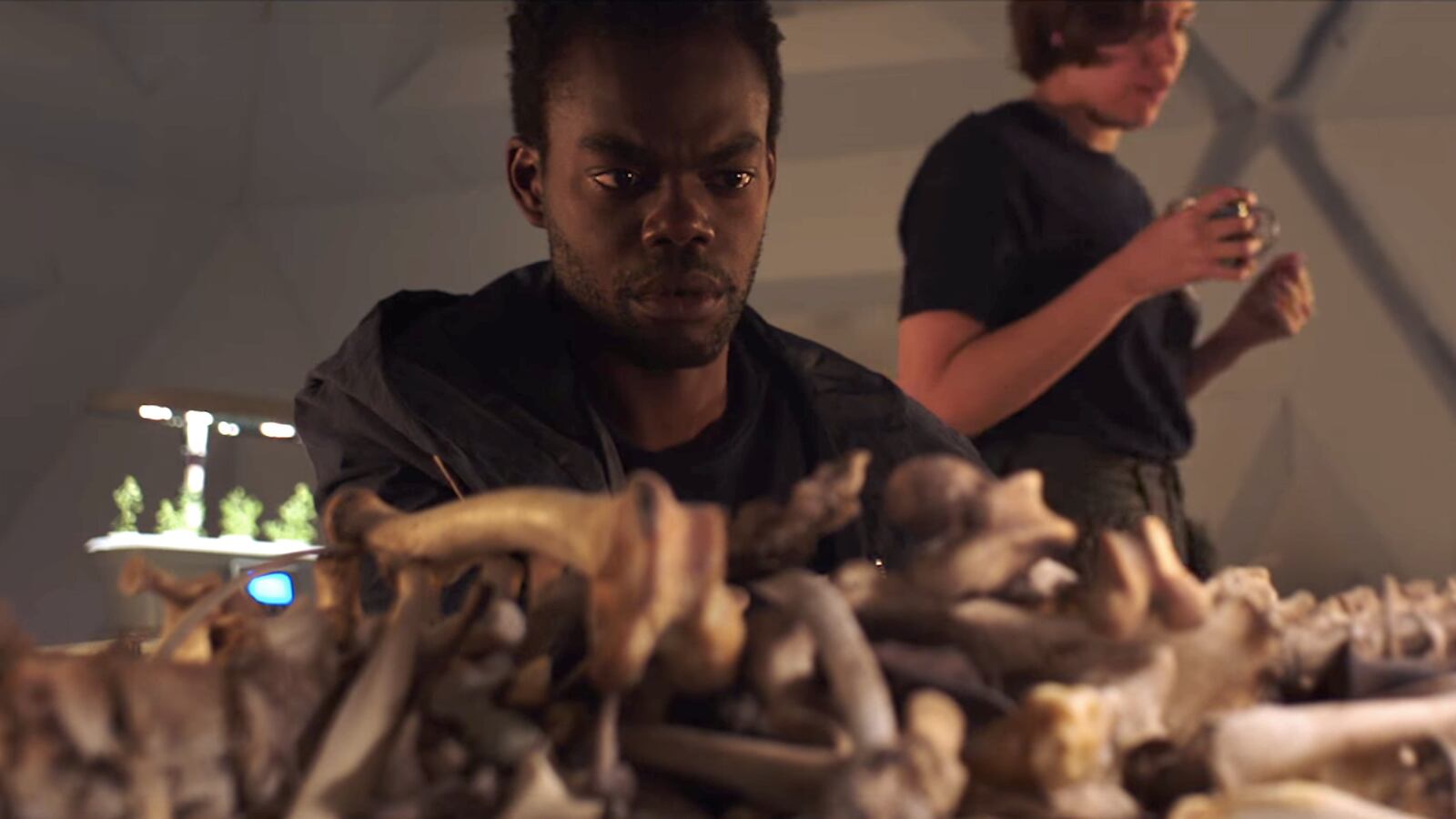The mad, mysterious irrationality of the world (and worlds beyond) is fundamental to the horror genre, and also to the work of author Laird Barron, a primary influence on True Detective creator Nic Pizzolatto, and an author whose stories often suggest that existence is fundamentally incomprehensible, uncontrollable, and uncaring.
A purveyor of “weird fiction,” which imagines the natural universe as constantly in danger of tipping over into dark, disorienting violence and insanity, Barron is a wholly distinctive literary voice whose tales—like that of compatriot Jeff VanderMeer, whose hallucinatory 2014 novel Annihilation just received a stellar cinematic translation courtesy of Alex Garland—often radiate a sort of cosmic bleakness born from the notion that we’re powerless to fight the black tide headed our way.
And now, he finally has a big-screen adaptation worthy of his prose.
They Remain is a decidedly unconventional horror film—and one that effectively embraces the haunting spirit of its source material, Barron’s novella –30–, which was published in his 2010 collection Occultation and Other Stories. Written and directed by Philip Gelatt with impressive formal precision, it’s a descent into psychosexual disassociation and deviance that operates by few standard rules, instead demanding that its audience keep up with it as it proceeds, first slowly and then deliriously, into ever-more-mystifying realms. Those looking for cheap jump scares will have to search elsewhere for their kicks. Yet intrepid moviegoers interested in immersing themselves in a saga that’s short on reason and heavy on dread will find much to enjoy about Gelatt’s uncompromising film, and its portrait of the infectious evil that surrounds us.
Prefaced by a quote from the godfather of weird fiction, H.P. Lovecraft (“Wise men have interpreted dreams, and the gods have laughed,” from 1923’s short story Hypnos), They Remain opens with beguiling images of a closed eye, and close-up pans across trees and other natural debris. Set at an indeterminate time and place, the plot concerns two researchers, Keith (William Jackson Harper) and Jessica (Rebecca Henderson), who are dropped off, by helicopter, in a woodland clearing at their new outpost, comprised of three pointy-roofed white modules that serve as their laboratory and sleeping quarters. “You know how this is going to end,” Jessica says in voiceover just before she and Keith first enter their new abode. Which, in a certain sense, is true; and in another sense, is definitely not.
The duo promptly embark on their respective assignments, with Keith setting up cameras around the surrounding forest during his daily expeditions, and Jessica remaining at the base to analyze biological samples and data. On a phone call with his corporate boss, Keith is informed that Jessica is “smart” but “obsessive,” while his own file indicates that he never misses a beat. Their mission is scheduled to end in a month—with each passing day X’d out on a calendar by Jessica. But what, precisely, is that mission? Gelatt has no immediate interest in revealing such specifics, his material gliding forward—and generating considerable intrigue—while forcing viewers to piece together the structure of his scenario on their own.
Nonetheless, details do emerge. Keith and Jessica have been sent here to investigate, and determine the source of, strange animal behavior. Moreover, this patch of middle-of-nowhere is infamous for being the “killing ground” of a Charles Manson-esque cult that preyed on itinerants, the homeless and lost souls, and committed some notorious atrocity in Portland known as “The Pleasantview Massacre.” Keith and Jessica are, in effect, residing on soil soaked in blood and bone. Over a bottle of booze at a campfire one night, Jessica admits, “I shudder to think what this land has witnessed. It gives me the chills.”
What Keith and Jessica witness, meanwhile, is a whole lot of nothing—at least initially. They chat about aliens and ghosts, and are visited by a helicopter pilot (Malcolm Mills) who informs them, “The decline of civilization continues apace.” In shots of Keith wandering the forest, and of footage from his surveillance cameras (often employing night-vision or heat-detection filters), Gelatt asks us to intensely study his placid frame, searching for life, and movement, that doesn’t appear to be present. Moreover, he edits his material elliptically, leaping forward in time—often from day to night, and between different geographic locations—to create a sense of time coming unmoored from its usual routine. The basic procession of minutes, hours and days gives way to a more dreamlike consciousness, until it becomes unclear when we’re watching actual dreams, especially once Keith begins seeing things that, he assumes, can’t actually be real—most notably, shadowy figures in the woods and on his video feeds.
Then, he returns from an excursion one day to learn that Jessica has discovered a giant curled horn-like structure that’s been carved from prehistoric rock. They caress it, and suddenly, the two alienated colleagues are having sex, their primordial desires unleashed by this ancient artifact.
They Remain is soon saturated with fantastical visions—of odd organic elements; of the cultists frolicking about the area and committing atrocities; and of a black circle surrounded by swirling red flame-like colors. Cinematographer Sean Kirby brings these unholy sights to life with smeary-focused beauty and grandeur. Full of rich, verdant colors, his unnerving compositions eventually begin to tilt off their axes, which further puts them in harmony with Tom Keohane’s soundscape of alarming tones, schizoid noises, and tribal beats—all of which have a habit of cresendoing to forewarn terror and doom at unexpected, seemingly innocuous moments, the better to keep one emotionally off-balance. It’s one of modern horror’s great disturbing soundtracks—a cacophony designed to fluster and frighten with unpredictable menace.
Of course, the film’s title implies that someone—or something—has stuck around, which provides a pretty good clue as to where things are ultimately headed. Yet that payoff, which only comes in the final moments, is less memorable than the waking-nightmare path taken to get there.
“The world is large and unknowable. No one ever really knows anything,” Keith opines late in their (increasingly deteriorating) assignment. Like the finest weird fiction, They Remain embraces that sentiment to its very core—and, in the process, provides a chilling vision of the inexplicable horrors lurking in the heart of man, Mother Nature, and reality itself.






